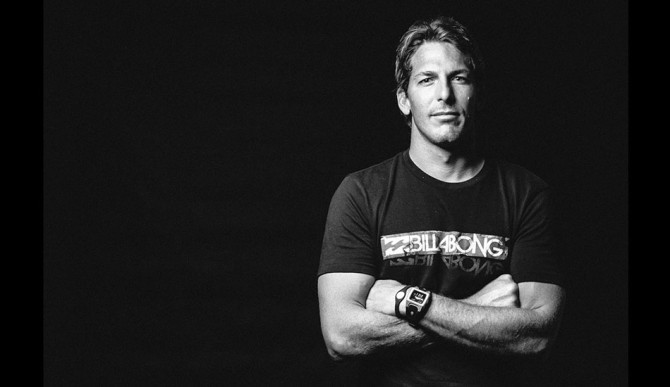Editor’s Note: Disruptors is a new series powered by Oakley that identifies the thirty most groundbreaking moments in surf history. Check out more historic moments here.

The Champ. Photo: Jason Reposar
Date: November 2, 2010
Place: Dallas/Fort Worth Airport’s Grand Hyatt Hotel in Grapevine, Texas
The Moment: Three-time World Champion Andy Irons dies in a hotel on a layover after missing a connecting flight to his home in Kauai.
Living a happy life is my main priority. You guys may think I am selfish for ‘wasting my talent’ by staying away from events for a bit, but I am finally at a comfortable place where I can honestly say, if you guys see me out on tour again it’s because I am there to win, and I’m going to go 100%. If you don’t see me on tour, it’s because I have found happiness away from winning, and that might be the biggest achievement I could ever accomplish.” – Andy Irons
Death is rather difficult to write about. You want to be respectful, and honest. Yet, in the wake of death, honesty is heavy with unnerved emotions that flood and drown “traditional” decorum in an outpouring of tangential thoughts that are often difficult to tie together. And, nearly four years later, the weight of a legend’s life cut short is still dense with confusion and potent with unnerved emotion.
I didn’t know Andy Irons personally, and I’m not going to act like I did. I also don’t know what exactly led to the tragedy, though there have been a handful of earnest attempts to demystify his death. But I do know what he represented to me and so many surfers: A.I. was a prodigious talent whose brashness made him an absolute rockstar, a hero for everyone from stoked groms to weathered vets. He wore his emotions on his sleeves, competitive or otherwise, and it was that outward expressiveness that allowed all of us to share a strong connection with Andy, whether we knew him or not.
Andy Irons was truly the people’s champion.
2010 was supposed to be his comeback. In the half decade prior, the three-time world champ from Kauai had experienced something of a falling out with competitive surfing. He had grown tired of the circuit, and admitted to simply going through the motions. In his private life, despite sharing an intense love with his wife, Lyndie Irons, Andy was struggling with substance abuse — which, subsequently, had him off and on and off the tour. However, he was reportedly working towards sobriety, and in the middle of the occasional relapses, he appeared to be getting better. Perhaps there was a newfound responsibility with his firstborn child on the way. And with a victory in Tahiti (his first since 2007), the Hawaiian was back in the winner’s circle.
But, on November 2, the Champ was found dead in an airport hotel room near landlocked Dallas. It was a senseless death with suspiciously little information available to explain it. And the surf community was devastated. There had been a hushed knowledge of his struggles, but it wasn’t until six months after his death that the final autopsy and toxicology report was filed, and questions or concerns surfing didn’t want to recognize were confirmed. The likely cause of death: heart disease and drug use. Andy was troubled, being treated for both anxiety and insomnia, as well as diagnosed with bipolar disorder when he was 18. He had also contracted typhoid fever about five years prior to his passing, which might have significantly damaged his heart. It was a perfect storm of physical and mental ailments that took a seemingly invincible warrior away from us. We had chosen to largely ignore his issues, because in magazines and on camera, he always appeared smiling — we didn’t see the angst beneath the surface. With his death, we were forced to confront the darker side of our sport, a side with very little aloha. Hopefully we’ll grow from it all. We have a long ways to go before we find out. But whatever happens, it won’t save Andy.
Today, we’ve come to tentative terms with his death: he has been immortalized with the surfers’ remembrance “A.I. Forever,” Billabong Pipe Masters in Memory of Andy Irons, and countless memories strewn across the seas in the form of opponents he inspired and people he touched. Not to mention the newfound professionalism and attitude that the ASP has adopted in its remodeling. One might argue that Andy’s passing catalyzed the organization’s new complexion more than any other element. Never again.
Andy Iron’s legacy is raw. It’s a talented, volatile explosion that caused surfing to seriously look itself in the mirror and consider its future – probably the same way Andy did.

